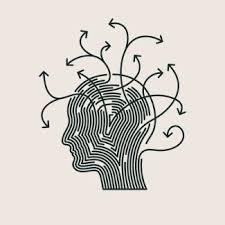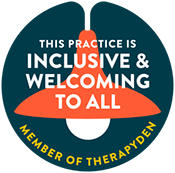Managing Panic Attacks Through Awareness and Reconnection
Panic attacks can arrive suddenly and without warning, leaving you feeling overwhelmed and powerless. For many individuals living with anxiety disorders, these moments are marked by a racing heart, dizziness, shortness of breath, or an intense sense of fear that feels impossible to control. Although panic attacks are not physically life-threatening, the emotional experience can feel deeply distressing—especially when the body reacts as though danger is imminent.
In my work as a therapist, I help clients understand that these moments, while frightening, do not define who they are. By learning to identify and reframe the stories surrounding anxiety, we can begin to lessen its power. Through grounding, mindfulness, and structured therapeutic strategies, it becomes possible to regain a sense of calm and agency, even in the midst of panic.
Grounding Techniques for Panic Attacks
When a panic attack arises, the goal is not to fight the feeling but to gently guide the mind back to the present moment. Grounding helps anchor awareness to what is real and immediate, reducing the intensity of panic sensations. A few effective strategies include:
-
The 5-4-3-2-1 Method: Identify five things you see, four things you feel, three things you hear, two things you smell, and one thing you taste. This technique engages the senses, helping the mind reconnect with the safety of the present moment.
-
Deep Breathing
Focus on slow, steady breaths to regulate the body’s stress response. Breathing deeply signals the nervous system that it is safe to relax, helping to ease the physical symptoms of panic. -
Sensory Anchoring: Hold something cold, textured, or meaningful to you. This sensory connection brings awareness back to the body and offers a tangible reminder that you are grounded in the here and now.
Grounding is not a cure for panic attacks, but it is an immediate and effective way to interrupt their momentum. Over time, these skills can be strengthened through therapy to reduce both the severity and frequency of panic episodes.
Rewriting the Story of Anxiety
Through Cognitive Behavioral Therapy (CBT), we work to identify and challenge the thought patterns that fuel anxiety and panic. By understanding the connection between thoughts, feelings, and behaviors, you can begin to replace fear-based responses with more balanced perspectives.
From the perspective of Narrative Therapy, I invite clients to externalize anxiety—viewing it not as a personal flaw but as a story that can be rewritten. This approach allows you to reclaim authorship of your life and recognize your strength and resilience.
Mindfulness complements these methods by cultivating awareness and compassion. When we observe our experiences without judgment, we create space to respond rather than react. Over time, this practice helps build emotional resilience and self-trust.
Positive Psychology helps us shift focus toward growth and gratitude, reminding us that every step forward—no matter how small—is a sign of progress and personal empowerment.
Moving Toward Calm and Confidence
Panic attacks can be deeply unsettling, but they do not need to define your life. With the right support, you can learn to navigate anxiety with greater ease and confidence. If you are struggling with panic attacks or ongoing anxiety, I invite you to reach out to me. Together, we can explore the patterns that contribute to your distress, develop effective coping tools, and work toward lasting change.
Schedule a consultation today to begin your path toward a calmer, more grounded life.




